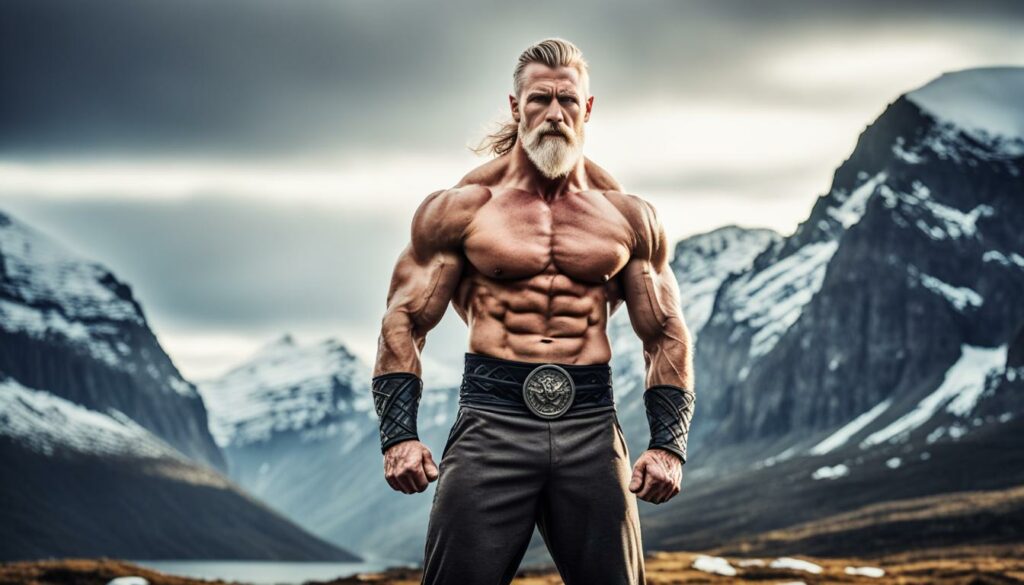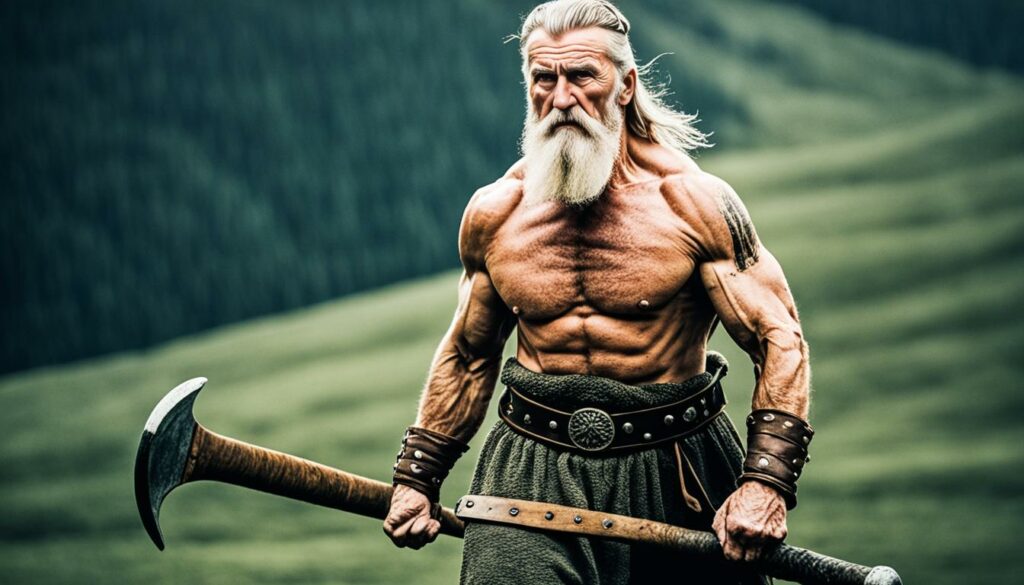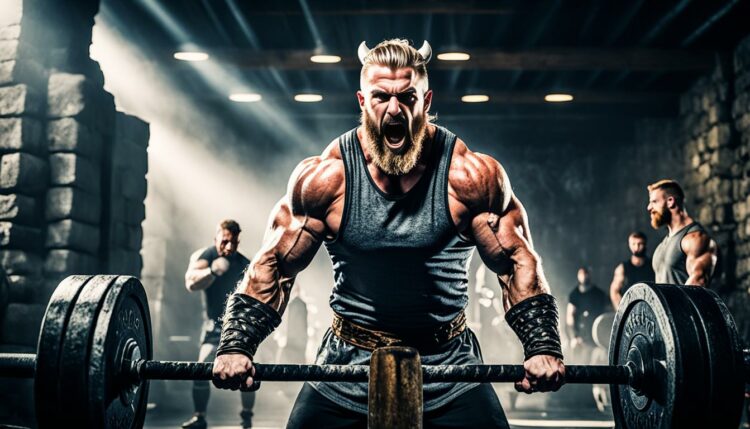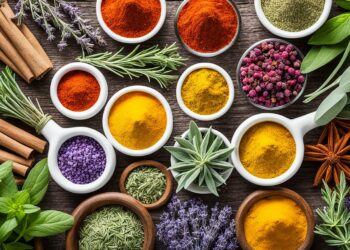Did you know that the Vikings, known for their fierce warriors and seafaring expeditions, also had a unique approach to health and longevity? Their lifestyle and ancient Scandinavian health traditions hold the secrets to a robust well-being that has stood the test of time.
Exploring the Nordic wellness practices and applying the lessons learned from the Vikings can revolutionize our understanding of how to live a longer, healthier life. By embracing the Norse approach to well-being, we can tap into a wealth of wisdom that will empower us to unlock our full potential.
Key Takeaways:
- The Viking approach to health and longevity offers a unique perspective on well-being.
- Scandinavian health traditions and Nordic wellness practices hold valuable secrets.
- Embracing the Viking lifestyle can lead to improved strength, resilience, and overall well-being.
- Understanding the Viking mindset and adopting their strategies can enhance our own longevity.
- By prioritizing strength and robustness, we can thrive like the Vikings and age gracefully.
The Impact of Nutrition on Muscle Growth and Aging
Nutrition plays a crucial role in both muscle growth and aging. To understand the intricate relationship between nutrition and these processes, we must explore the workings of two key enzymes: AMPK and mTOR.
AMP-activated protein kinase (AMPK) is known for its potential to increase lifespan. This enzyme functions by promoting cellular recycling, reducing oxidative stress, and decreasing inflammation. By activating AMPK, individuals can potentially extend their years of robust health and vitality.
mammalian target of rapamycin (mTOR), on the other hand, is responsible for muscle building. Activation of mTOR triggers protein synthesis and supports the growth and maintenance of muscle tissue. However, excessive stimulation of mTOR can accelerate cellular aging, leading to potential health complications.
The choice of nutrition, including calorie and carbohydrate intake, heavily influences the balance between AMPK and mTOR activity, thus impacting both muscle growth and longevity.
A diet rich in carbohydrates and a caloric surplus are known to favor muscle growth by providing the necessary energy and nutrients for mTOR activation and protein synthesis. This approach is often adopted by athletes and bodybuilders aiming to maximize their muscle gains.
Conversely, a lower carbohydrate intake and a caloric deficit can increase longevity by shifting the focus towards AMPK activation.
This state of energy restriction stimulates cellular recycling and prompts the body to utilize its energy reserves more efficiently. However, it is important to note that this approach may make it more challenging to build and maintain muscle mass.
| Nutritional Strategy | Effect on Muscle Growth | Effect on Longevity |
|---|---|---|
| High carb intake and caloric surplus | Promotes muscle growth | May reduce longevity |
| Low carb intake and caloric deficit | Challenging for muscle growth | May increase longevity |
Striking the right balance between muscle growth and longevity requires careful consideration of nutritional choices and goals.
Whether prioritizing muscle gains or longevity, individuals should consult with healthcare professionals and nutrition experts to design a personalized nutrition plan that aligns with their unique needs and aspirations.

The Role of Exercise in Muscle Growth and Aging
Exercise plays a crucial role in both muscle growth and aging. Understanding the different types of exercise and their effects on the body can help optimize your fitness routine for maximum results. In this section, we will explore resistance training, endurance work, and their impact on muscle growth and aging.
Resistance Training and Muscle Building
Resistance training, also known as strength training or weight lifting, is the cornerstone of muscle growth. This type of exercise involves using external resistance, such as weights or resistance bands, to challenge and overload the muscles.
During resistance training, the body activates a cellular process known as mTOR activation. mTOR is a key pathway that regulates protein synthesis and muscle growth. By engaging in regular resistance training workouts, you can stimulate mTOR and promote muscle building.
Endurance Work and AMPK Release
Endurance work, which includes activities like running, cycling, or swimming, focuses on increasing cardiovascular fitness and building endurance. These exercises activate a different pathway in the body called AMPK release.
AMPK is an enzyme that plays a crucial role in energy regulation and promoting cellular health. When AMPK is released during endurance work, it helps improve mitochondrial function, increase fat oxidation, and enhance overall endurance performance.
The Balance Between mTOR Activation and AMPK Release
Both mTOR activation and AMPK release are essential for optimal muscle growth and aging. However, it’s crucial to find a balance between these two pathways to achieve overall health and fitness benefits.
Too much mTOR activation without AMPK release can lead to excessive muscle growth but may negatively impact longevity and cardiovascular health. Conversely, excessive AMPK release without mTOR activation can hinder muscle growth potential.
By combining resistance training and endurance work in your fitness routine, you can stimulate both mTOR activation and AMPK release, striking a balance between muscle growth and overall well-being.
The Importance of Cardiovascular Health
Cardiovascular health plays a critical role in supporting muscle growth and aging. A strong cardiovascular system enables better oxygen and nutrient delivery to the muscles, allowing for increased muscle mass and improved performance.
To enhance cardiovascular health, incorporate cardiovascular exercises such as running, swimming, or cycling into your fitness routine. These activities not only promote cardiovascular fitness but also contribute to better overall health and longevity.
Enhancing Cardiovascular Health: Energy System Work and Density Training
In addition to traditional cardio exercises, including energy system work and density training can further enhance cardiovascular health and provide a growth stimulus for your muscles.
Energy system work involves training different energy systems in the body, such as the aerobic and anaerobic systems. This type of training can improve both endurance and power, leading to better overall cardiovascular fitness.
Density training, on the other hand, focuses on maximizing the work done within a given timeframe. By performing a higher volume of exercises with shorter rest periods, you can challenge your cardiovascular system and improve its efficiency.
By incorporating a variety of exercise modalities, including resistance training, endurance work, energy system work, and density training, you can optimize your fitness routine for muscle growth, cardiovascular health, and overall well-being.
The Impact of Body Mass on Aging
Body mass, whether it is muscle or fat, plays a crucial role in the process of aging. When it comes to longevity, understanding the relationship between body mass and the cardiovascular system is essential.
Increased body mass can place a greater demand on the cardiovascular system, potentially leading to negative effects on overall health and longevity.
Both muscle mass and fat mass contribute to body mass, and each has a distinct impact on the support system of the body. While muscle mass provides strength and resilience, excess fat mass can strain the cardiovascular system and increase the risk of developing various health conditions.
For individuals aiming to maintain a more muscular physique as they age, it is crucial to prioritize cardiovascular health. Improving cardiovascular function not only supports a healthy heart but also ensures that the body can effectively carry and support the increased muscle mass.
By maintaining a balance between muscle mass and a healthy cardiovascular system, individuals can enhance their longevity and overall well-being.
Regular exercise, especially activities that target the cardiovascular system, can contribute to maintaining this balance. Incorporating exercises like walking, running, or cycling can help improve cardiovascular function and strengthen the heart.
Additionally, incorporating long loaded carries, such as carrying heavy objects over longer distances, can provide a unique challenge to the cardiovascular system and further enhance its function.

By focusing on cardiovascular health and maintaining an optimal body mass, individuals can support their longevity and enhance their overall quality of life. Striking a balance between muscle mass and a healthy cardiovascular system is key to embracing the passage of time with strength and resilience.
Conclusion
The Viking approach to health and longevity centers around strength, resilience, and overall well-being. By embracing the ancient Scandinavian traditions and Nordic wellness practices, we can unlock the secrets of the Vikings and enhance our own longevity.
Achieving optimal health requires a harmonious balance of nutrition, exercise, and body mass, with a particular focus on cardiovascular health.
By adopting the mindset of an eternal warrior, prioritizing the improvement of our body’s capacities, and nurturing lean muscle mass and mobility, we can truly thrive like the Vikings and gracefully age.
Incorporating the Viking approach into our modern lifestyle, we can experience the profound benefits of increased strength, heightened resilience, and a greater sense of well-being. By applying their principles, we unlock the potential to live a healthier, more fulfilling life, mirroring the Viking legacy of longevity and vitality.
FAQ
What is the Viking approach to health and longevity?
The Viking approach to health and longevity focuses on strength, resilience, and robust well-being. It involves ancient Norse practices that have been passed down through generations, emphasizing a balance between physical fitness and overall well-being.
What are some Scandinavian health traditions and Nordic wellness practices?
Scandinavian health traditions and Nordic wellness practices include a focus on natural, whole foods, outdoor activities, and a connection to nature. They also prioritize mental and emotional well-being through practices like meditation and self-reflection.
What are the longevity secrets of the Vikings?
The Vikings’ longevity secrets lie in their lifestyle choices, which prioritized physical fitness, a wholesome diet, and a strong community support system. They embraced a combination of strength training, endurance work, and cardiovascular health.
How does nutrition impact muscle growth and aging?
Nutrition plays a crucial role in both muscle growth and aging. The two key enzymes involved in aging, AMPK and mTOR, are affected by nutrition. The choice of nutrition, including calorie and carbohydrate intake, can significantly impact both muscle growth and longevity.
What is the role of exercise in muscle growth and aging?
Exercise is essential for both muscle growth and aging. Resistance training activates the mTOR enzyme, promoting muscle building, while endurance work triggers the release of AMPK. Combining resistance and endurance training helps maintain a balance between these two enzymes and promotes overall fitness and well-being.
How does body mass affect aging?
Body mass, whether it is muscle or fat, has an impact on aging. Increased body mass puts a greater demand on the cardiovascular system, which can have a negative impact on longevity. Maintaining a balance between muscle mass and cardiovascular health is crucial for healthy aging.
How can I apply the Viking approach to health and longevity in my own life?
You can adopt the Viking approach to health and longevity by incorporating strength training, endurance work, and cardiovascular exercise into your fitness routine. Prioritize whole, natural foods and focus on maintaining a balance between muscle mass and cardiovascular health.








